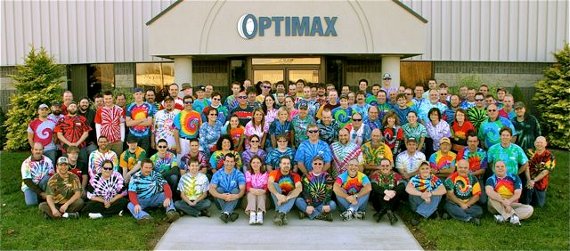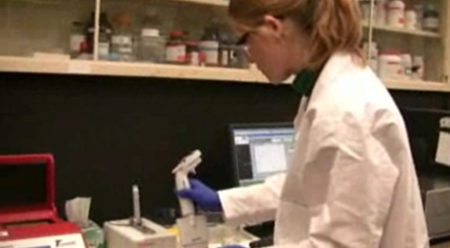Marketing KPIs & Benchmarks for 2026
We work with B2B leaders every day who have extensive marketing data, but don't know what to make of it. It's hard to know you're on track to meet...

Good photography is a core marketing asset when it comes to presenting a company to prospective and existing customers—it makes the intangible services offering a little more tangible, the technology more real, and the application more compelling. When we work with companies to execute their marketing roadmap, the lack of good corporate photography is often a barrier to getting a marketing project complete on a tight timeframe and budget, whether it’s issuing a press release of a new hire, designing a trade show booth display, or creating a marketing success story.
A corporate photo shoot is one of the action items to build a solid marketing foundation. To minimize cost and disruption, and maximize leverage, here are the steps to prepare:
A corporate photo shoot intends to show customers who a company really is, in action, so what better way to demonstrate that than to portray normal interactions and habits in the office?
In order to be completely prepared for your photo shoot, think ahead. Do you have classified information written on a board that will be in the background of photos? Are you testing a product that you aren’t yet ready to reveal to customers? Be sure to hide anything you do not want your customers to see. Spaces should be clean with appropriate lighting. Have an image of how you want your products, employees, and companies to be portrayed. Put yourself in the shoes of the customer viewing your photos. You must plan ahead and have goals in mind of what you want to accomplish by taking and publishing your photos.
There are core corporate shots that you should plan to take during your photo shoot. These include:
A common theme and cohesiveness are critical elements when presenting an accurate message to the public. Here, corporate culture comes into play. Whether your company has a common uniform or a common set of guidelines that all employees abide by, it is important to feature such elements in a photo shoot so customers get a real sense of what your company is about. Consistency and teamwork evoke impressions of strength and confidence, characteristics that you want your customers to associate with your company.

As important as it is to maintain company culture in photos, it’s also important to wear camera-friendly clothing. Avoid clothes with small stripes since they tend to blur together in photos, and stick to a corporate dress code with simple color palettes (for example, blues and greys, or khakis and navy.) White looks great on everyone and photographs nicely.

Neutral no, personality yes.
Schedule the shoot to make sure you can get all the shots you’ll want in a half-day or day. Check the calendar for production, key leaders and customer-facing staff, and your marketing or creative director. During the actual photo shoot, your head of marketing or creative director should be onsite to prevent miscommunication or a missed shot. What’s visually interesting to a photographer who does not know your business and technology is not necessarily what’s interesting to your customer. At PLS, we always accompany the photographer to ensure we have what we’ll need for all conceivable future uses, and to make sure our customers and their facilities are captured in their best light.
Some disruption is unavoidable, but a tour beforehand to scout for and prepare locations will minimize your down time and improve end image quality. It will feel contrived, but you will need to deliberately stage workers in a way that both captures their natural interactions with the products and with each other while not obstructing the view of what needs to be seen or conveyed. Beware of awkward shadows and reflections.
Great items to have on hand during the actual shoot include:
These items can help you stage a scene or disguise an eyesore.

Black foam core disguises rusty pipes in this lab.
At-hand, ready-to-use images will increase the effectiveness of your marketing. An action photo makes a press release more compelling to journalists, a product shot brings more attention to a new product announcement. As you review the photos after the shoot, take the time to touch up key images and save them in several useful file formats (for instance, 72 dpi images for web usage, and 300 dpi for print).
Post-production image enhancement can make you (and your product’s) wrinkles and blemishes disappear, but there are limitations. There’s little to be done to change angles, haircuts, and facial expressions after the fact. During a photo shoot, it’s important to take pictures from multiple angles and at multiple heights. Optical products are particularly challenging to photograph—we cannot always alter imperfections in glass. It’s important to avoid placing glass objects in front of busy or dirty backdrops. When it comes to image backgrounds, keep it simple. Avoid blank walls (they create a mug shot feel) but do watch for clean lines and make sure that there is nothing near/around people's heads.
Next time your company is due for a photo shoot, a little planning and direction can help you create compelling marketing visuals.

We work with B2B leaders every day who have extensive marketing data, but don't know what to make of it. It's hard to know you're on track to meet...

Get a Competitive Edge with Comprehensive AI & GEO Insights If you are beginning to notice an erosion in organic traffic and leads, it may be time to...

Updated on 6/10/24 The 80/20 rule or Pareto principle, is a long-standing business strategy that a lot of companies are applying right now to...